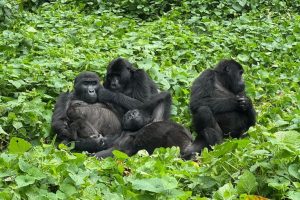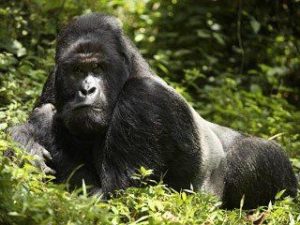Things to do in Queen Elizabeth National Park
Things to do in Queen Elizabeth National Park. Queen Elizabeth National Park in Uganda is one of the most popular and diverse national parks in Africa, offering a wide range of activities for nature and wildlife enthusiasts. The park’s varied ecosystems include savannah, lakes, wetlands, and tropical forest, making it a prime destination for a variety of activities. Here are some of the best things to do in Queen Elizabeth National Park:
1. Game Drives
One of the top activities in Queen Elizabeth National Park is the traditional safari game drive. These drives offer opportunities to spot the park’s rich wildlife, including:
- Lions (often seen in the Kasenyi Plains, sometimes tree-climbing lions in the Ishasha sector).
- Elephants, buffalo, Ugandan kob, warthogs, hyenas, and a variety of antelope species.
- Drives are typically done in the morning or late afternoon when wildlife is most active.
Top Game Drive Areas:
- Kasenyi Plains: Best known for lion sightings and large herds of Uganda kobs.
- Ishasha Sector: Famous for its rare tree-climbing lions.
- Mweya Peninsula: Known for sightings of elephants and warthogs.
2. Boat Safari on the Kazinga Channel
A boat safari along the Kazinga Channel, a natural waterway connecting Lake Edward and Lake George, is one of the park’s highlights. This leisurely cruise offers amazing opportunities to see wildlife and birds close-up, including:
- Large herds of hippos, crocodiles, and buffaloes cooling off near the shores.
- Elephants and antelope coming to drink.
- Abundant birdlife, including African fish eagles, kingfishers, and pelicans.
The boat cruises last approximately 2 hours and provide some of the best photo opportunities in the park.
3. Chimpanzee Tracking in Kyambura Gorge
Kyambura Gorge, also known as the Valley of Apes, is a lush tropical forest nestled within a deep gorge. This area is famous for its population of chimpanzees.
- You can go on a guided chimpanzee tracking trek to observe these primates in their natural habitat.
- In addition to chimps, you might also encounter other primates like black-and-white colobus monkeys and a variety of birds.
Tracking permits are required, and the trek through the gorge is scenic and rewarding, even if chimp sightings aren’t guaranteed.
4. Tree-Climbing Lions in Ishasha Sector
The Ishasha Sector of Queen Elizabeth National Park is unique for its population of tree-climbing lions. This behavior is rare among lions, and Ishasha is one of the few places in the world where you can witness it.
- These lions can often be seen lounging in fig and acacia trees, especially during the heat of the day.
- Game drives in Ishasha also provide chances to see other wildlife like buffalo, elephants, and topis.
5. Bird Watching
Queen Elizabeth National Park is a paradise for birdwatchers, with over 600 bird species, making it one of the best birding destinations in Africa. The park’s diverse habitats, including savannah, forests, wetlands, and lakeshores, support a variety of species, including:
- African skimmers, shoebills, papyrus gonoleks, and flamingos.
- Great white pelicans, martial eagles, and Malachite kingfishers.
Bird watching can be done during game drives, boat safaris, or on nature walks around the park.
6. Nature Walks and Forest Hikes
Queen Elizabeth National Park offers several guided nature walks and hikes:
- Maramagambo Forest: A dense tropical forest where you can explore trails leading to bat caves, beautiful craters, and various primate species.
- Mweya Peninsula: You can walk along the shores of Lake Edward and enjoy the views while spotting animals and birds.
- Ishasha River: A guided walk along the Ishasha River can give you a different perspective on the park’s flora and fauna.
7. Visit the Katwe Explosion Craters
The Katwe Explosion Craters are volcanic craters that provide stunning views of the surrounding landscape, including lakes, the Rift Valley, and the distant Rwenzori Mountains. A drive through the crater lakes region offers a unique experience with panoramic views and an opportunity to learn about the geological history of the area.
- The Katwe Salt Lake is also located nearby, where local communities harvest salt using traditional methods. Visiting the Katwe Salt Pans gives insight into local culture and salt production.
8. Cultural Encounters
Queen Elizabeth National Park offers various cultural experiences that allow visitors to interact with local communities and learn about traditional Ugandan culture:
- Kikorongo Women’s Community: Learn traditional weaving, dance, and music from local women.
- Nyanz’ibiri Community Tourism Initiative: Explore traditional Banyaruguru village life, visit a traditional healer, and learn about local farming methods.
- Katwe Salt Works: Visit the salt pans where locals extract salt from Lake Katwe, a centuries-old practice.
These cultural tours help support local communities and provide a deeper understanding of the area’s heritage.
9. Explore the Rwenzori Mountains (Near the Park)
While not inside the park itself, the Rwenzori Mountains (also known as the “Mountains of the Moon”) are located nearby and offer excellent hiking opportunities.
- You can embark on a day hike or a multi-day trek through the Rwenzori Mountains National Park, known for its unique vegetation and dramatic mountain landscapes.
10. Crater Lake Tour
Queen Elizabeth National Park has numerous crater lakes, some of which are located in scenic spots, such as:
- Lake Munyanyange: Known for its seasonal flamingo population.
- Lake Nyamunuka: Referred to as the “animals’ hospital” because of the therapeutic properties of its water for sick wildlife.
These crater lakes add to the park’s scenic beauty and offer great opportunities for photography and sightseeing.
11. Mongoose Tracking on Mweya Peninsula
The Mweya Peninsula offers a unique experience with banded mongoose tracking. This research-based activity allows visitors to join researchers as they study the behavior of these highly social creatures.
- It’s a rare opportunity to learn more about smaller wildlife in the park and take part in conservation efforts.
12. Hot Air Balloon Safari
A hot air balloon safari offers a bird’s-eye view of the park’s landscapes, wildlife, and lakes. These flights take place in the early morning, giving you the chance to witness a spectacular sunrise over the savannah and spot wildlife from above.
- The balloon safari ends with a bush breakfast, making it a special experience.
Best Time to Visit Queen Elizabeth National Park:
- Dry Seasons (June to September and December to February): Ideal for game drives, chimpanzee tracking, and boat safaris.
- Wet Seasons (March to May and October to November): Better for bird watching but the rains can make some roads more difficult to navigate.
Conclusion
Queen Elizabeth National Park offers a wide variety of activities that cater to all interests, whether you’re passionate about wildlife, bird watching, cultural experiences, or simply soaking in the incredible landscapes. It’s one of Uganda’s must-visit destinations, offering unforgettable adventures for all types of travelers.




